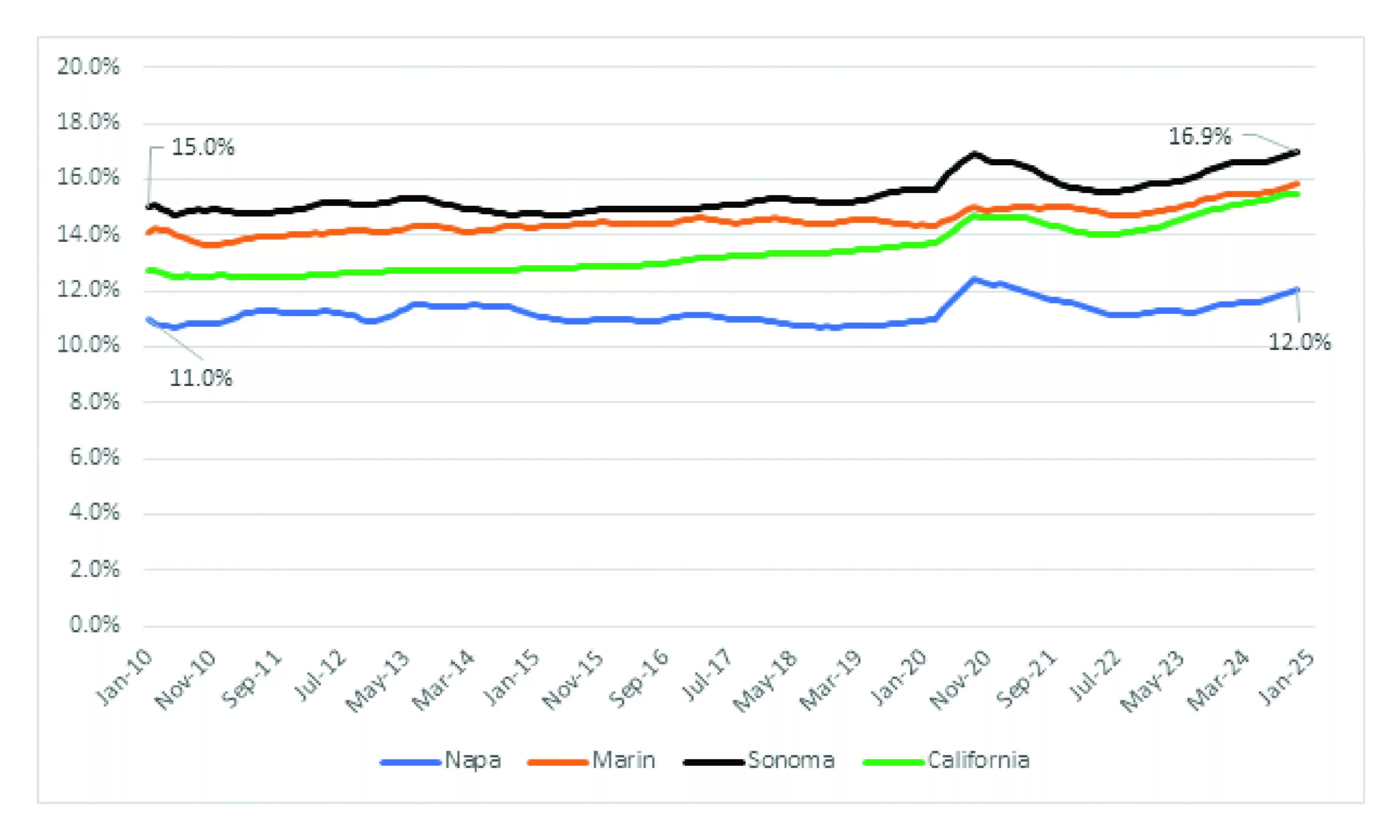
Percent of Total Jobs in Health Care, North Bay Counties and California, Monthly, January 2010 to January 2025, Seasonally Adjusted. Source: California EDD, Bureau of Labor Statistics, Author's Calculations
It is easy to think of health care as something like electricity. People expect health care to be there when needed. Health care should be seen as a foundation for economic development; a strong health-care system and a wide variety of health-care options can support why an employer locates, stays or expands in a local area. Vibrant and varied health-care options also help define the quality of life for a region.
Frontline jobs in health care are skilled positions and provide many jobs that are career-defining and relatively high-wage. Employer attraction strategies look at health care as a way to market reasons for businesses to locate in a region. Like other employers, health care—from hospitals to your local walk-in care facility—needs local residents to fill positions offered and to see regional workers available over time based on school enrollments and training programs.
Education, from high school to graduate school, helps train health care workers. Our community college systems in California have a wide array of training programs, some of which are prepared directly for employment, with others as preparation for a bachelor’s degree or beyond in a health-care field. Santa Rosa Junior College (SRJC) has long been a place where an array of new health-care workers emerge annually; Sonoma State University (SSU) also trains new health-care workers, including nurse practitioners. SSU’s offerings are likely to expand in the coming years.
Health care has a wide array of jobs, and it is good to consider industries versus occupations. Health care as an industry hires workers in four main employer groups: acute care hospitals, outpatient facilities, in-patient facilities (long-term hospital environments focused on specific medical issues), and public/non-profit health care (clinics). A wide breadth of laboratory technicians and scientists is needed to speed test results along and shorten diagnostic times. The markets are regional; workers may move between locations as freelance workers or as part of a regional or national health-care system.
For the North Bay, the proportion of local jobs in health care has increased since 2010, accelerated by the pandemic period (see accompanying figure). For California, the number of people working has increased since 2010 by 26.4%; the slow and steady increase in health care shows its rising foundation. For Sonoma, Napa and Marin counties, job growth has been 22.5%, 23.1%, and 14.0%, respectively. Slower growth with more health-care workers; the common thread is that the North Bay has aged more quickly than California on average, and thus, health-care demand regionally has grown. Sonoma County is a super-regional hub, attracting people from Lake and Mendocino counties as needed. The regional aspects of health-care systems also drive the location where a population exists.
A health-care sector that relies on a remote hub can undermine economic development and, thus, dynamic industries and growth. Rural California—especially northern rural California—has struggled with this issue for years. We cannot lose sight of this in terms of supporting education programs, like those at Sonoma State and SRJC, to train regional workers to become health-care professionals. We need more trained workers. Residents and employers expect to have a certain level of service, and its ability to be there 24 hours a day is critical if something goes wrong. You may not use it, but you want it there, like when you turn on a light.



